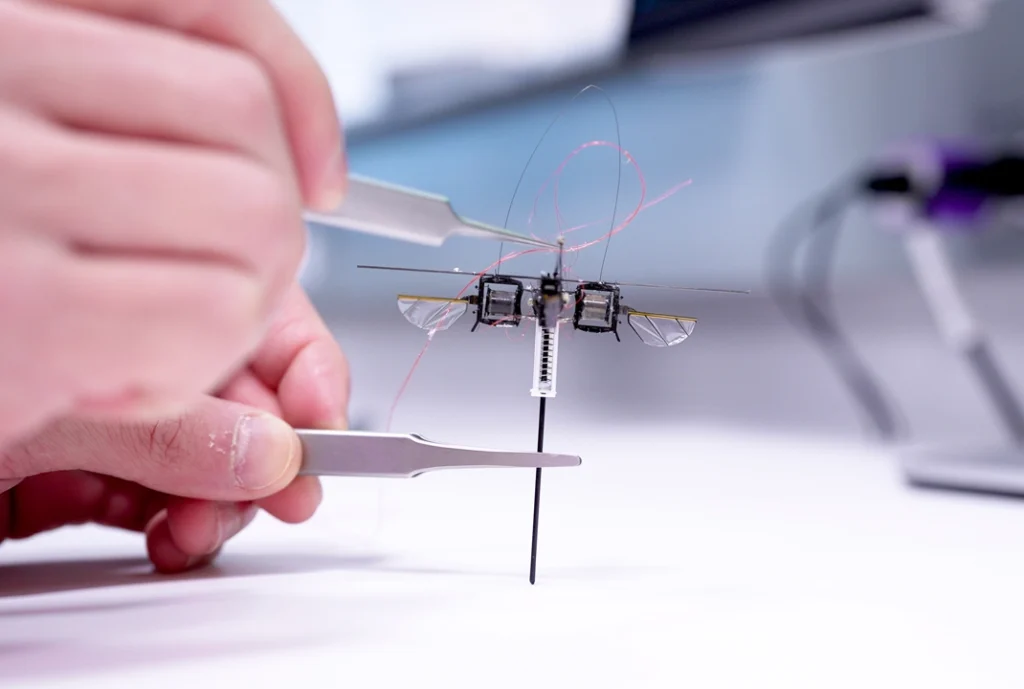- AFP
- Yesterday

Hopping gives this tiny robot a leg up
-
- Reuters
- May 15, 2025

CAMBRIDGE: Engineers at the Massachusetts Institute of Technology (MIT) have developed an insect-sized hopping robot capable of navigating rugged terrain and carrying heavy payloads, offering potential applications in disaster response and exploration.
The thumb-sized device, weighing less than a paperclip, combines a spring-loaded leg with four flapping-wing modules to leap over obstacles and traverse uneven surfaces like ice, wet glass, and soil.
The robot, recently detailed in the journal Science Advances, jumps up to 20 centimetres high – four times its height – while using 60 per cent less energy than comparable aerial robots. Its elastic leg converts kinetic energy efficiently, akin to a click-pen spring, while flapping wings ensure stability and orientation.
This design allows it to carry payloads up to 10 times heavier than those of similar-sized flying robots, enabling the integration of batteries, sensors, and circuits. The robot’s control system adjusts its trajectory mid-air, ensuring precise landings across dynamic terrains.
“The passive leg, just like a tiny pogo stick, makes sure the robot can bounce back efficiently from the ground. On the other hand, the flapping wing modules ensure the robot stay upright for stability,” said Yi-Hsuan (Nemo) Hsiao, an MIT graduate student and co-lead author.
Funded partly by the National Science Foundation, the project aims to make the robot autonomous by adding onboard power and sensors.
The team sees its agility and versatility as a potential breakthrough for multimodal robotics at such a small scale, making it useful in search and rescue missions where it could access and navigate through confined spaces.
“The great thing about this robot is that it can traverse various terrain,” said Yi-Hsuan Hsiao, adding, “In the very extreme case where the droppers encounter challenging terrains like a steep surface, it can still fly over it if it’s needed.”
Also read: China’s AI-powered humanoid robots aim to transform manufacturing






